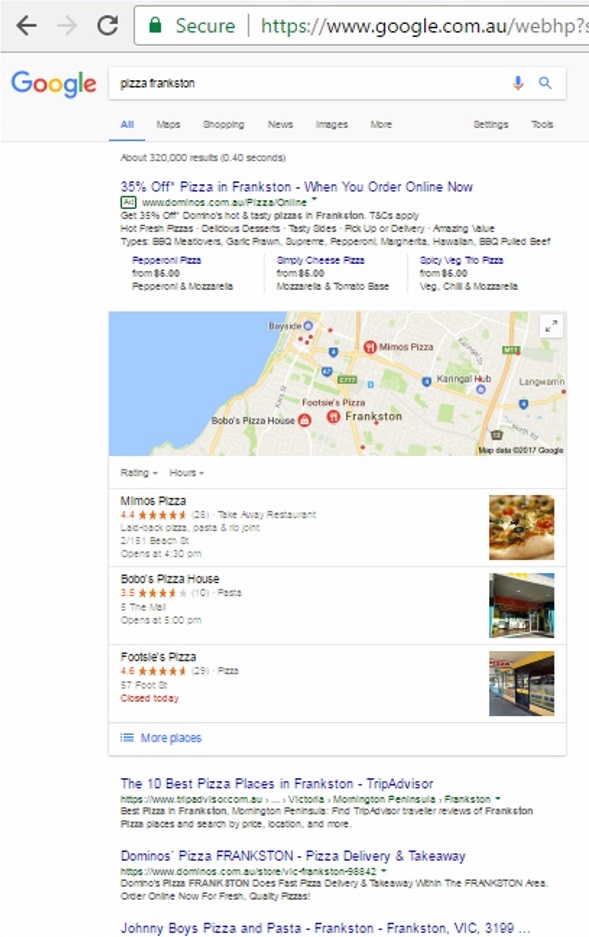
“Bricks-and-mortar” businesses have special needs in reaching out to their local customers. Imagine for a second that you want to order a pizza. So you go on Google and you find lots of pizza restaurants ... in New Jersey, Scotland, Brazil, ... . The trouble is: you live in a suburb of Melbourne. Not helpful! - and neither would this be any use to those pizza places near you.
Google does help prioritise locality in their listings - but there are other things that are necessary in order to be successful.
The first thing you, as a local business, must do - is to list your business on local listings or directories. There are listings for different types of businesses - for trades, such as plumbers and mechanics, for restaurants and cafes (I'd put my Pizza place here!), for professional services such as accountants, lawyers, etc. Google uses these listings to help find the local businesses near to where the customer is.
Google (and all search engines) check many sources, including huge numbers of local directories, trades directories, blogs, and more, for details of businesses. These details, often called ‘citations’, include essentials such as business name, service(s) offered, address, contact, opening hours.
What is most important is that these details must be consistent and up-to-date across all sources. If they are, the search engines will be more likely to accept the business as legitimate.
Here's more information about citation sources/local listings and citations.
It is cumbersome and time-consuming to manage citations well - I can do this for you!
Many of these listings invite reviews from customers. Good reviews are of course extremely important to a business! And this is no less the case online. It is important to reach out to customers.
“Google My Business” - will put you on Google Maps and also give you the possibility to get a special feature on Google Search's front page.
“Rich Snippets” - also known as "structured data" or "schema", will also help you get featured. Google will select certain businesses for special featuring - presenting them prominently in a nice format, with all their contact information, perhaps also a map, image, reviews. But for this to happen the business's information has to be marked up using special code.
Social Media have their own ways of structuring data. For instance Facebook uses ‘open graph’ - different from 'schema'. But all these different ways need to be used!
Google has useful information on what they need for snippets; also here is information about structured data for social media.
